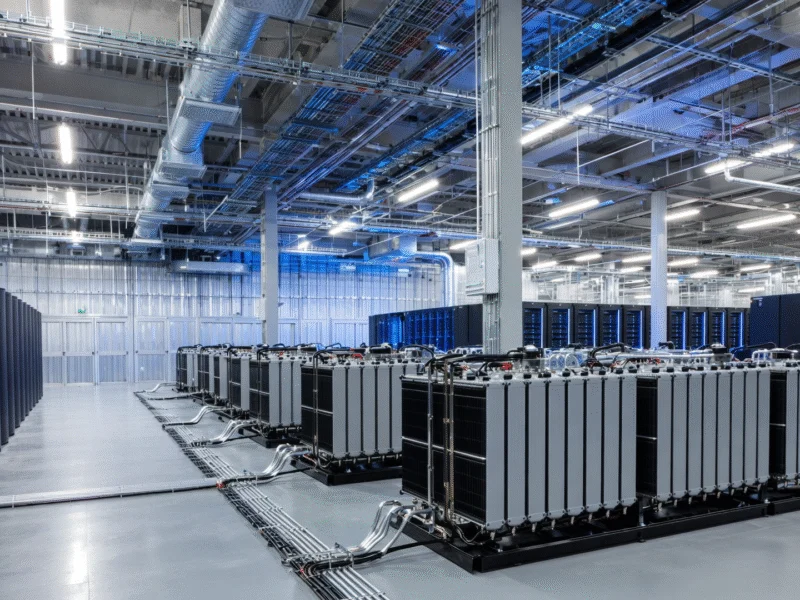The Density Dilemma in Energy Storage
Industry experts are warning that the race to increase energy density in battery storage systems may be creating what analysts describe as a “density trap.” According to reports from Wärtsilä Energy Storage professionals, the strategy of packing more megawatt-hours into fewer boxes appears efficient on paper but often fails to deliver expected operational benefits in the field.
Sources indicate that higher nameplate density promises increased energy throughput and cost savings, but these metrics don’t always translate to real-world value. The report states that comparing battery storage to a car fuel tank illustrates the challenge: “The size of the gas tank is important, but without an accurate gauge, you can’t be certain how many miles you can drive.”
Usable Energy Versus Raw Capacity
Analysts suggest that what truly matters for battery storage power station operators isn’t simply how much energy can be stored, but how much usable energy can be confidently and consistently delivered when needed. Industry experts emphasize that usable energy has become more critical than raw energy density for generating revenue and supporting grid stability.
According to the analysis, asset owners often assume that higher energy density cells mean fewer enclosures, smaller sites, and lower capital costs. However, reports indicate that some ultra-dense units present transportation challenges due to excessive weight or complexity, adding shipping and integration costs before the first kilowatt-hour is dispatched.
Operational Challenges and Revenue Impacts
The report states that performance often fails to match expectations once systems are online. When batteries cannot reliably discharge at full-rated power, asset owners may need to oversize installations to meet contractual commitments, eliminating any cost or density advantages initially anticipated.
Analysts suggest that in capacity markets where bids are placed ahead of time, even small uncertainties can result in significant revenue loss. Sources indicate that a 100-MWh battery system owner might only bid 80 MWh to account for uncertainties, effectively stranding 20 MWh of capacity that has been paid for but cannot be monetized. This challenge is reportedly affecting asset owners across Europe, Latin America, Australia, the U.S., and other key global markets.
Integrated Solutions for Enhanced Performance
Industry experts highlight that the root causes of performance uncertainty—including state-of-charge errors, cell imbalance, and degradation—are detectable and manageable with advanced, integrated hardware and software systems. According to reports, advanced electric battery systems can predict changes in cell performance long before they cause derating.
The analysis suggests that with predictive analytics and real-time monitoring, operators can proactively rebalance cells and preserve output, transforming reactive maintenance into revenue-protecting strategies. Without integrated systems that monitor and manage these factors, sources indicate asset owners either undercommit or overbuild—both approaches reducing returns.
Beyond Density: The Complete Value Picture
Industry professionals emphasize that investing in solutions to enhance usable energy will drive revenue far more effectively than chasing raw density numbers. According to the report, integrating battery management systems, power plant controllers, analytics, and bidding software enables operators to balance cells, forecast performance, and submit bids reflecting actual capacity.
Analysts suggest that focusing solely on density misses the hidden cost of degradation. Temperature and usage patterns significantly impact how quickly batteries lose capacity. Optimizing chiller operation, managing temperature profiles, and coordinating rest cycles for battery strings ensures that usable energy remains high throughout the system’s operational life.
As the industry evolves, future tenders and performance contracts are expected to reward battery systems that demonstrate usable, reliable energy over time. This shift comes amid broader industry developments in technology infrastructure and parallels recent technology trends in other sectors. The emphasis on operational reliability reflects similar priorities seen in market trends across various industries where predictable performance outweighs theoretical capacity.
Industry experts conclude that while density may make battery storage systems appear impressive on paper, the true measure of value remains usable energy that can be reliably forecasted, dispatched, and monetized—ensuring that energy storage investments deliver consistent returns amid evolving related innovations and market conditions.
This article aggregates information from publicly available sources. All trademarks and copyrights belong to their respective owners.
Note: Featured image is for illustrative purposes only and does not represent any specific product, service, or entity mentioned in this article.



